Wondering how to remove rust stains? Keep on reading!
Whether you are wondering how to remove rust stains from clothes, fabrics, toilets, tubs, sinks, or furniture, our rust stain removal tips will ensure that you keep those pesky orange stains at bay.
The ideal rust stain removal process will differ for the different surfaces that you are trying to clean, so if you are looking to clean a specific surface, hop on over to that section to find out how to clean it properly.
Otherwise, if you are here to find out a little bit more about rust stains in general and how they are cleaned, then you’ll find this article very helpful. To start off, let’s take a look at what causes rust stains in the first place.
*This post contains affiliate links. Full disclosure here.
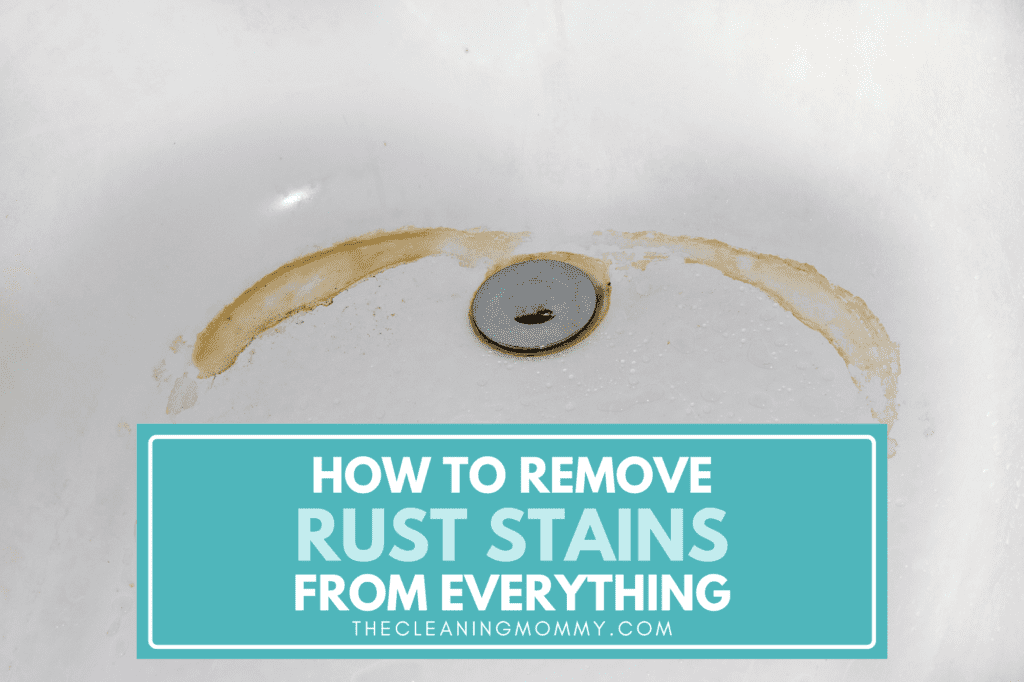
What Causes Rust Stains?
Rust stains around sinks, tubs, toilets, and faucets usually occur because of corrosion. The stains occur when iron deposits react with oxygen and moisture to form iron oxides. This reaction happens naturally over time on untreated metal surfaces.
The rust stains found near drain and tub drains and toilet bowl, however, are caused by water containing high levels of iron particulate, iron bacteria, rusty water heaters, rusty plumbing pipes, or untreated metal components in the toilet bowl. These substances combine with the mineral ions in the water to form iron hydroxide complexes. This causes the iron to attach itself to the surface of the fixture and become visible as a dark brownish or, sometimes orange, coloration.
If you live in an area where the water contains elevated levels of iron, it is recommended that you filter the water prior to drinking it or washing dishes. You can do this by installing a water softener system or purchasing bottled water.
If you decide to clean the hard water stains in your bathroom or any other place they might occur, take note that they will reappear until you treat the source of the problem. Treating the water with a water-softening system or installing a filter will solve this issue.
How to Get Rust Stains Out of Clothes and Fabric
Now that we know what we are dealing with let’s take a look at how we can remove tough rust stains from clothes and other fabrics.
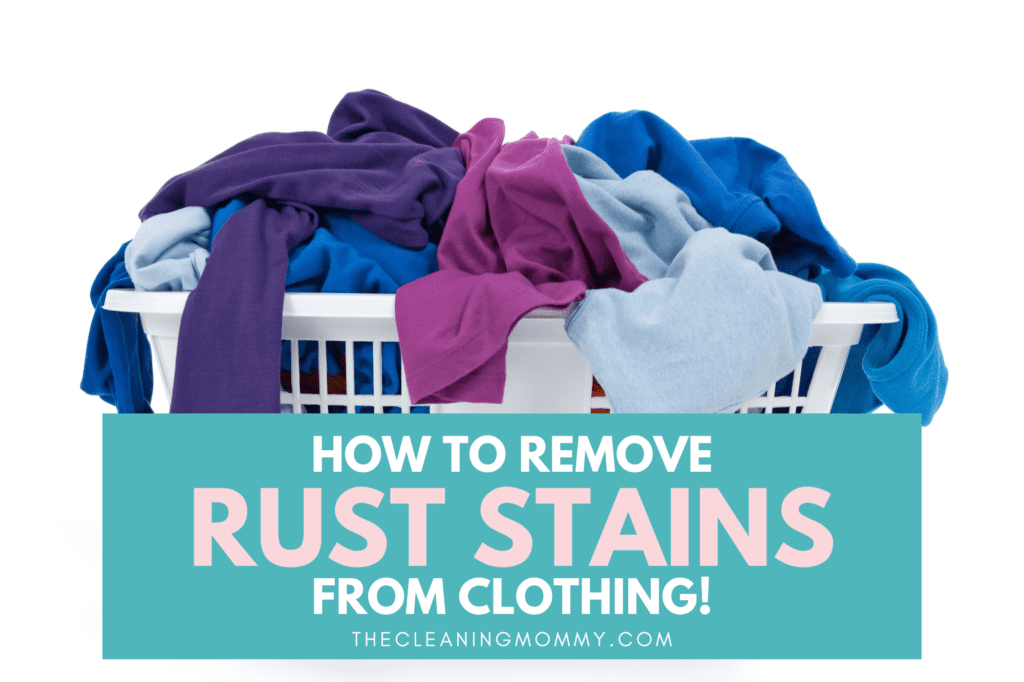
How to Remove Rust Stains From Clothing and Washable Fabrics
Hydrogen Peroxide, Baking Soda, and Cream of Tartar
Cream of tartar is a pantry essential that is useful for baking on its own. Additionally, it cleans gently. However, when combined with hydrogen peroxide and baking soda, it becomes a potent homemade rust stain remover. Natural bleaching agents and the acids in cream of tartar work together to remove the stain and break down the rust.
One teaspoon of cream of tartar, one teaspoon of baking soda, and a few drops of hydrogen peroxide should be combined to form a paste. Before attempting to remove the rust stain, spot-test the paste on dark materials in case the hydrogen peroxide fades or discolors the cloth. Once you’re certain it’s safe, apply the paste to the stain and give it 30 minutes to work before thoroughly rinsing the fabric. If the stain is still visible, let the clothing air dry before trying again.
Lemon Juice With Salt
Salt is a natural abrasive that also absorbs liquids, while lemon juice is a natural antibacterial cleaning and safe natural bleaching agent. Combining lemon and salt results in a potent stain remover method that is gentle on your garments. Test the lemon juice first on a seam or a hidden area to ensure it’s safe before using it on dark textiles because they cannot be colorfast.
Lay the garment flat to dry after applying salt, lemon juice, and salt on the rust stain. Allowing your clothing to dry in the sun on a sunny day will hasten the stain removal procedure. Repeat the procedure if the stain persists.
A dose of commercial rust remover, available at hardware stores, is helpful for more extensive or difficult stains.
DO NOT USE CHLORINE BLEACH ON RUST!
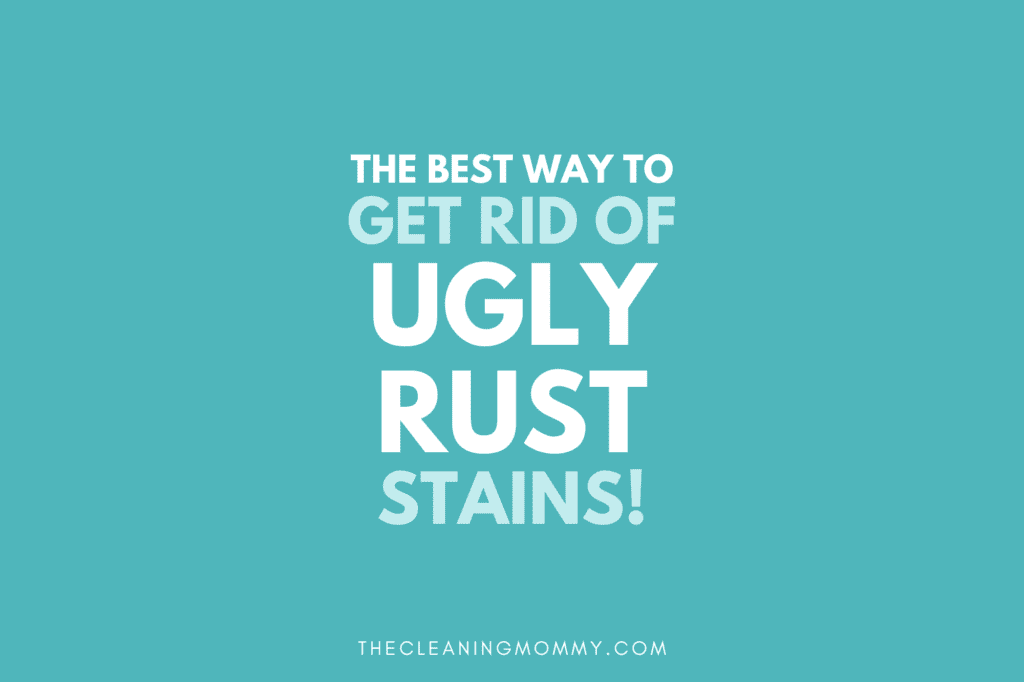
Commercial Rust Removers
You can use a commercial rust remover to try and get rid of the stain. They can do a fantastic job. However, when using this technique, exercise caution because it could damage your clothing. Always do a spot test of an inconspicuous section of the stain to see how the cleaner reacts with the fabric before proceeding to the larger stain. Wear protective gear to prevent the harsh chemicals from getting on your skin since they could cause skin irritation.
- Apply the rust remover sparingly to the garment’s affected regions.
- To get the cleaner into the fibers, rub it in with an old toothbrush.
- Before rinsing the clothes, let them sit for a short while.
How to Remove Rust Stains From Non-washable Fabrics
If you are trying to remove a rust stain from non-washable materials, you have two options: either take it to a professional cleaner or use the following method:
- Salt and lemon juice are combined to form a thick paste. If the cloth responds well to the spot test, you can treat the affected area.
- After applying the mixture to the stain, expose it to the sun.
- Lemon juice should be frequently added to keep the cloth moist until the stain is gone.
- Remove any remaining salt.
How to Remove Rust Stains From Carpets or Furnishings
To clean rust-stained areas on the carpet or coach, simply use one of the following techniques.
Soapy Water
Making a soapy water solution could be all it takes to get rid of rust stains from carpet or upholstery!
- In a bucket, combine dishwashing liquid and cool water.
- Use a sponge to drench your carpet or upholstery in the solution, working it in until it’s saturated.
- Give it 10 minutes to sit.
- Work this into the fibers of the carpet or upholstery with a cloth or gentle brush.
- Absorb the remaining solution with a clean towel.
Salt, Lemon, and Vinegar
This is a good, environmentally friendly method of rust stain removal.
- Make the rust-cleaning solution by combining one cup of distilled white vinegar, one tablespoon of lemon juice, and a bit of salt.
- To apply the solution to the rust stain, use a sponge or cloth.
- Give it 10 minutes to rest.
- Work it into the carpet or upholstery fibers with a cloth or sponge.
- The remaining solution can be absorbed with a fresh towel.
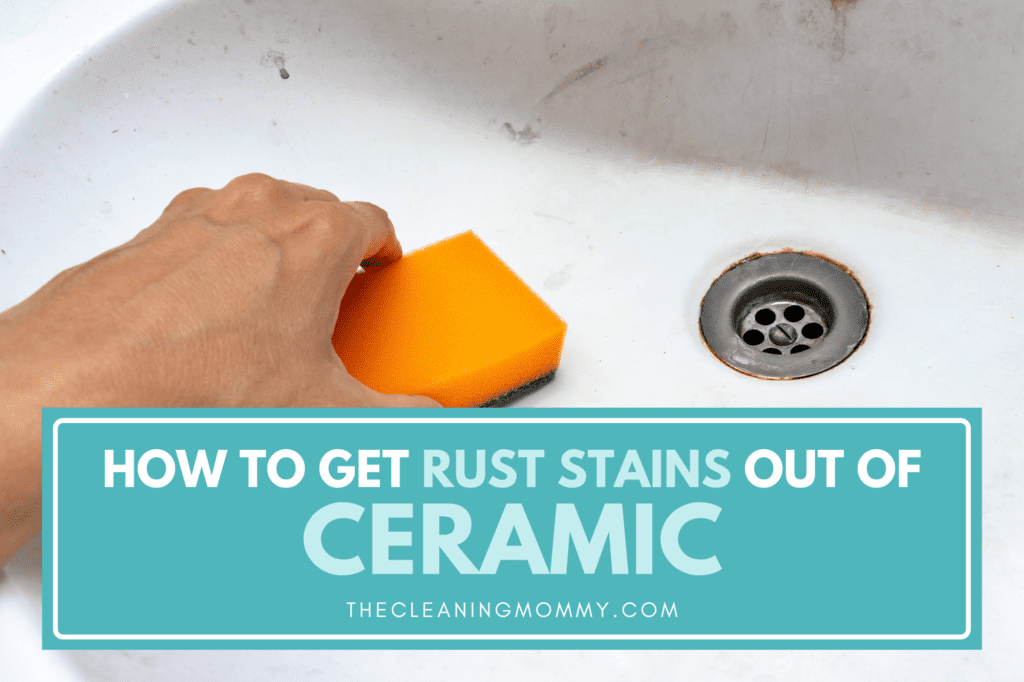
Add Ammonia
This technique is similar to the ones mentioned before, except it adds an additional potent component: ammonia.
- Scrape off any excess rust particles with a butter knife. Now vacuum over the stain to remove the loose rust particles.
- Combine two cups of warm water, two tablespoons of dish soap, and one tablespoon of household ammonia.
- Use a cloth to dab the solution on the rust stain.
- Give it five to ten minutes to sit.
- Use a different cloth to blot the area. Use a fresh piece of cloth each time. This stops the rust from returning to the carpet or upholstery.
- To remove any soapy residue, moisten a separate towel with clean water and dab the affected area.
- Let the area air dry, and then vacuum the spot.
How Often to Clean Rust Stains on Toilets, Tubs, and Sinks
Pay special attention to the parts of the bathroom that are prone to rust stains when you clean it on a weekly basis. Additionally, it is beneficial to completely dry plumbing fixtures like sinks, tubs, and showers after each use to prevent rust flakes from the water from adhering to the surfaces.
How to Get Rust Stains Out of Porcelain
Vinegar with Baking Soda
You’ll love using these two common items around the house for a range of cleaning tasks, including rust removal.
- Generously sprinkle some baking soda.
- Pour white vinegar over the stain until the baking soda starts to fizz.
- Use a damp cloth, sponge or soft brush and a little elbow grease to scrub everything clean.
- Rinse off the baking soda and vinegar mixture. Wipe with a clean cloth
Industrial Rust Removers
Several commercial rust removers, including CLR, are available and do an excellent job of removing rust spots. Read the product label carefully and follow the instructions. Wear gloves and other protective gear as recommended on the package. Be sure to store and dispose of the product correctly, as some are made from harsher chemicals than others.
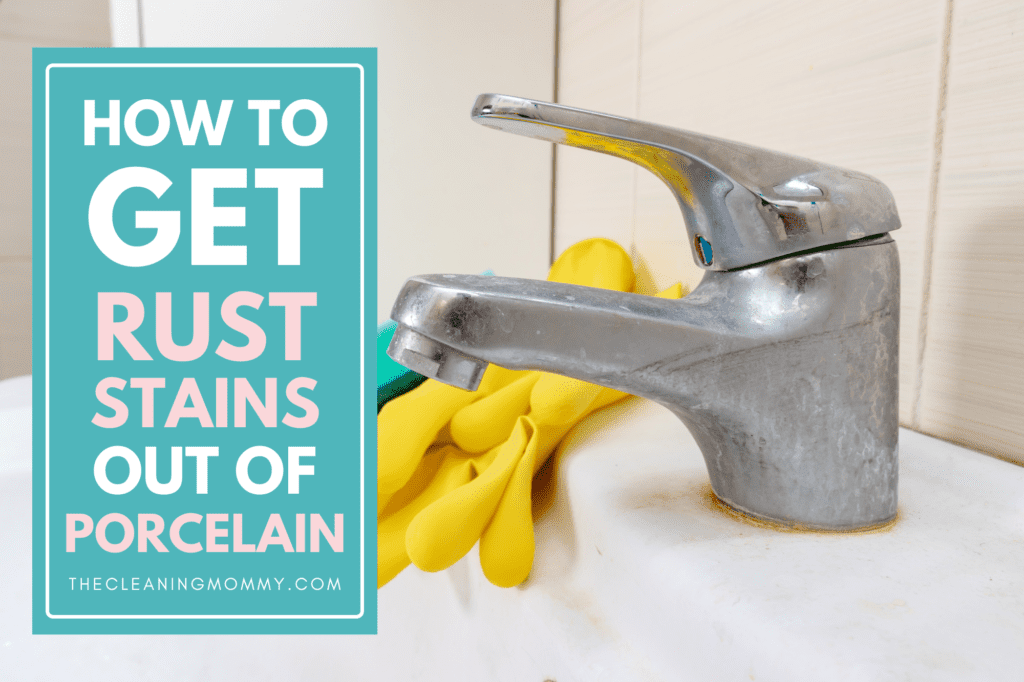
How to Get Rust Stains Out of Ceramic
Hydrogen Peroxide and Cream of Tartar
This is a fantastic technique for rust stains on porcelain and ceramic surfaces. Skip this approach if the surfaces in your bathroom are made of a different material.
- Cream of tartar and 3 percent hydrogen peroxide should be combined in a 1:2 solution.
- Apply the solution to the rust stain using a sponge.
- Let it sit for one to two hours.
- Scrub the stain with a stiff-bristled brush or scouring pad.
- Rinse the area well with clean water once the stain has been removed.
- If the stain remains, repeat the process until the stained area lessens or disappears.
How to Get Rust Stains Out of Fiberglass
Since fiberglass is frequently used to coat showers, tubs, and other surfaces that constantly come into touch with water, you’ll probably need to clean rust stains from your fiberglass products at some point. Never use steel wool, scouring pads, or other abrasive products to clean fiberglass; instead, use soft, nonabrasive materials like polyethylene, polyester, or nylon.
- Use water to dampen the rust streaks. Sprinkle some baking soda on top of them. Apply some water to a soft nylon brush, then gently scrape the baking soda into the rust stains. If a paste does not form between the water in the brush and the baking soda, rewet the brush to add additional water to the mixture.
- For one hour, let the baking soda paste sit on the rust streaks. Apply a clean, wet sponge to the fiberglass to remove the paste. Don’t let any baking soda residue remain on the surface.
- If the stains are still noticeable, wet a white cotton cloth with acetone. To get rid of any last traces of rust, gently massage the stains with the acetone while opening a window for ventilation.
- After the spots have disappeared, rinse the fiberglass with the wet sponge. Wipe the surfaces dry right after each usage to prevent future occurrences.
Home Remedies for Removing Rust Stains
Home remedies can be pretty helpful in removing stains. Here are some handy home remedies for removing rust stains:
- Rust can be removed with salt, limes, and lemons.
- Mix tartar, baking soda, and hydrogen peroxide into a paste.
- To make a homemade rust remover, combine salt, vinegar, and baking soda.
- Sprinkle salt and use a raw potato (skinned) to scrub rusty areas.
- Use washing soda and ketchup to break down a rust stain, then wipe it away.
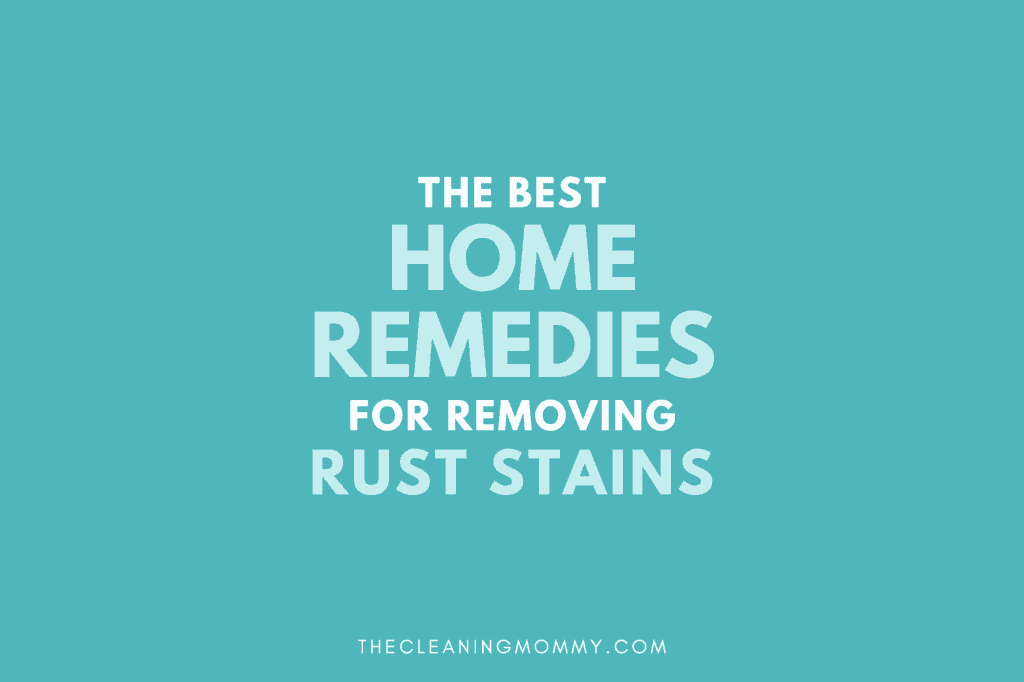
General Tips on Dealing With Rust Stains
- With rust as any other stain, quick action is better
- Follow instructions carefully for any commercial stain-removing products.
- Always check the care instructions for any material before attempting a remedy.
- Use cold water to rinse so that the stain does not set.
- When switching methods, make sure to clean the surface thoroughly. Do not mix chemicals.
- Always test cleaning solutions on an inconspicuous spot first.
- Use gentle rubbing to remove stains so as not to damage the fabric or surface.
- White towel blotting is always a good method for fabrics so you can see if the stain is coming up.
Tips to Prevent Rust Stains on Toilets, Tubs, and Sinks
Many homeowners struggle to keep their bathroom fixtures, tubs, toilets, and sinks free of rust stains. Here are some simple tips to help you prevent the rust stain from forming in the first place:
- After each use, clean the sink and bathtub to eliminate any iron stains that may have remained in the water.
- Hard water that is iron-rich, particularly well water, frequently causes bathroom rust. Future stains can be avoided by installing a filtration system or water-softening system.
- Because of the dampness in bathrooms, cans and decorative storage containers with metal rings on the bottom (such as shaving cream, air fresheners, hair sprays, and cleansers) can quickly rust and stain surfaces. Keep these items hidden in a cupboard far from the sink and bathtub.
- Look inside the toilet tank. Metal tank components in older toilets may be corroded and rusted. Replace them with PVC parts that are resistant to corrosion.
- Quickly fix plumbing leaks. Rust stains can accumulate quickly, even from a tiny faucet drop.
Conclusion
There are different methods that you can try to get your sinks, tubs, or toilets sparkling clean again. The same goes for your carpet, clothes, and furniture. We hope that this article has proven helpful and that you feel armed with the knowledge to make your next rust-cleaning task a success.
More On Cleaning the Bathroom
- How To Clean Shower Head Without Vinegar
- Best Homemade Grout Cleaner With Dawn
- How To Remove Black Mold From Shower Caulk
- How To Green Clean The Bathroom
- How To Clean a Bathroom Sink Overflow Hole
- How To Clean Bathroom Rugs
- Getting rid of mold on your clothes
- Quotes about decluttering
- How to get bleach out of clothes
- How to clean ghosting on walls

Grainne Foley
Grainne Foley is a wife and mother of 2 great kids. During her 5 years of full time RV travel, Grainne learned to become very efficient at household chores, in order to make time for family adventures. Now, back in a house, she has continued to create tools and techniques to help others lighten the load of household organization and cleaning.
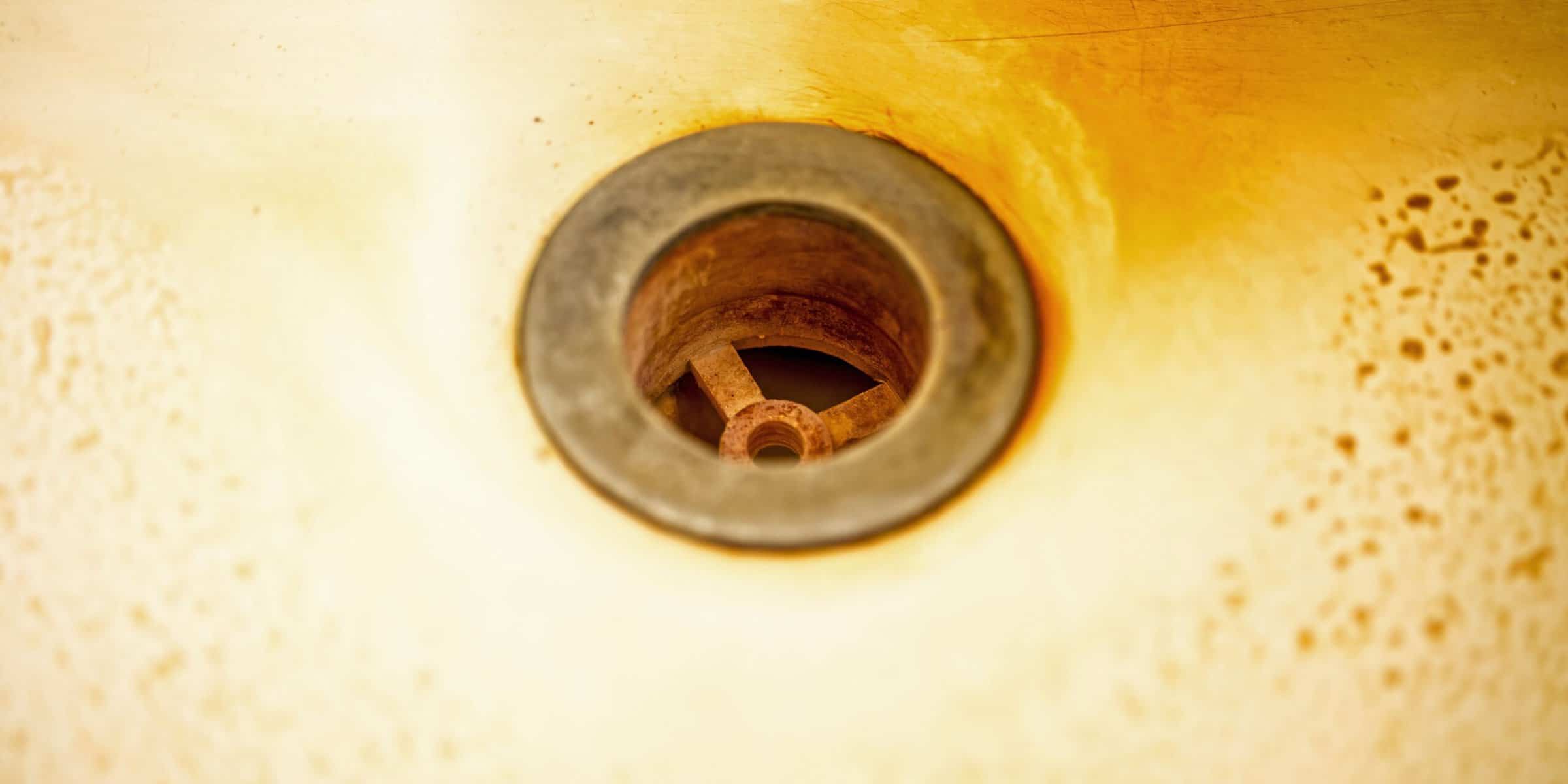
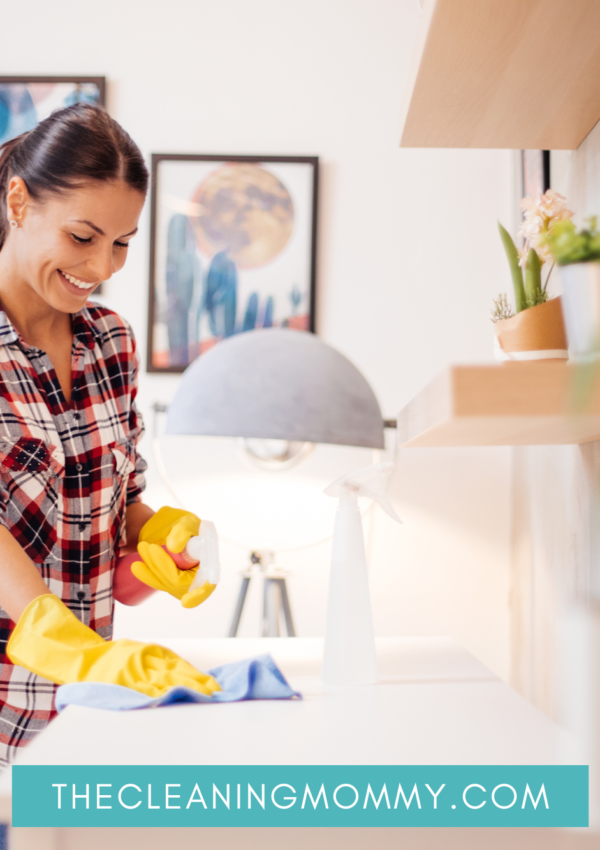
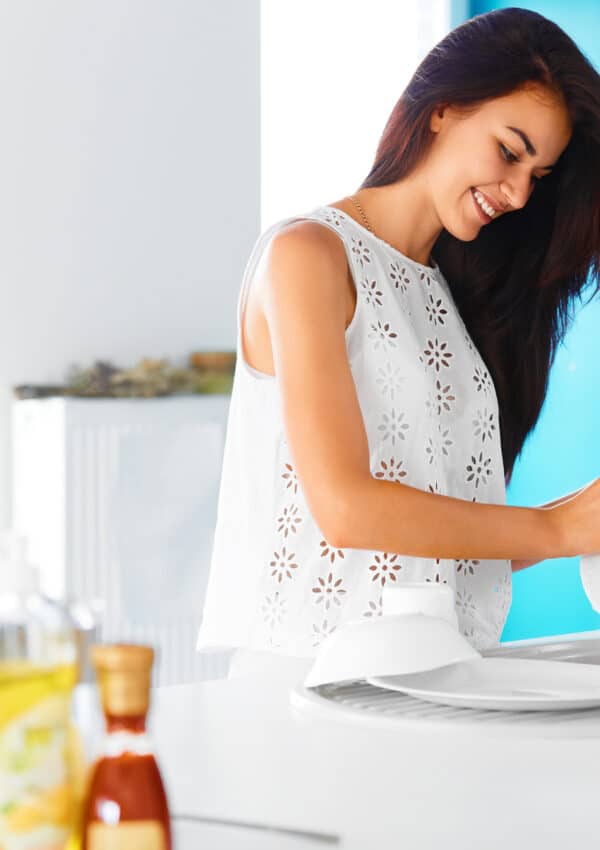
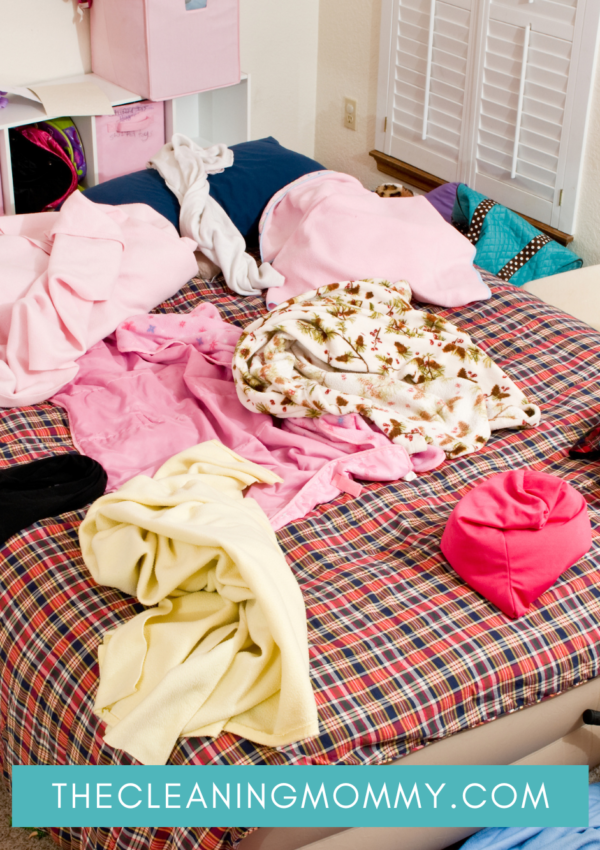
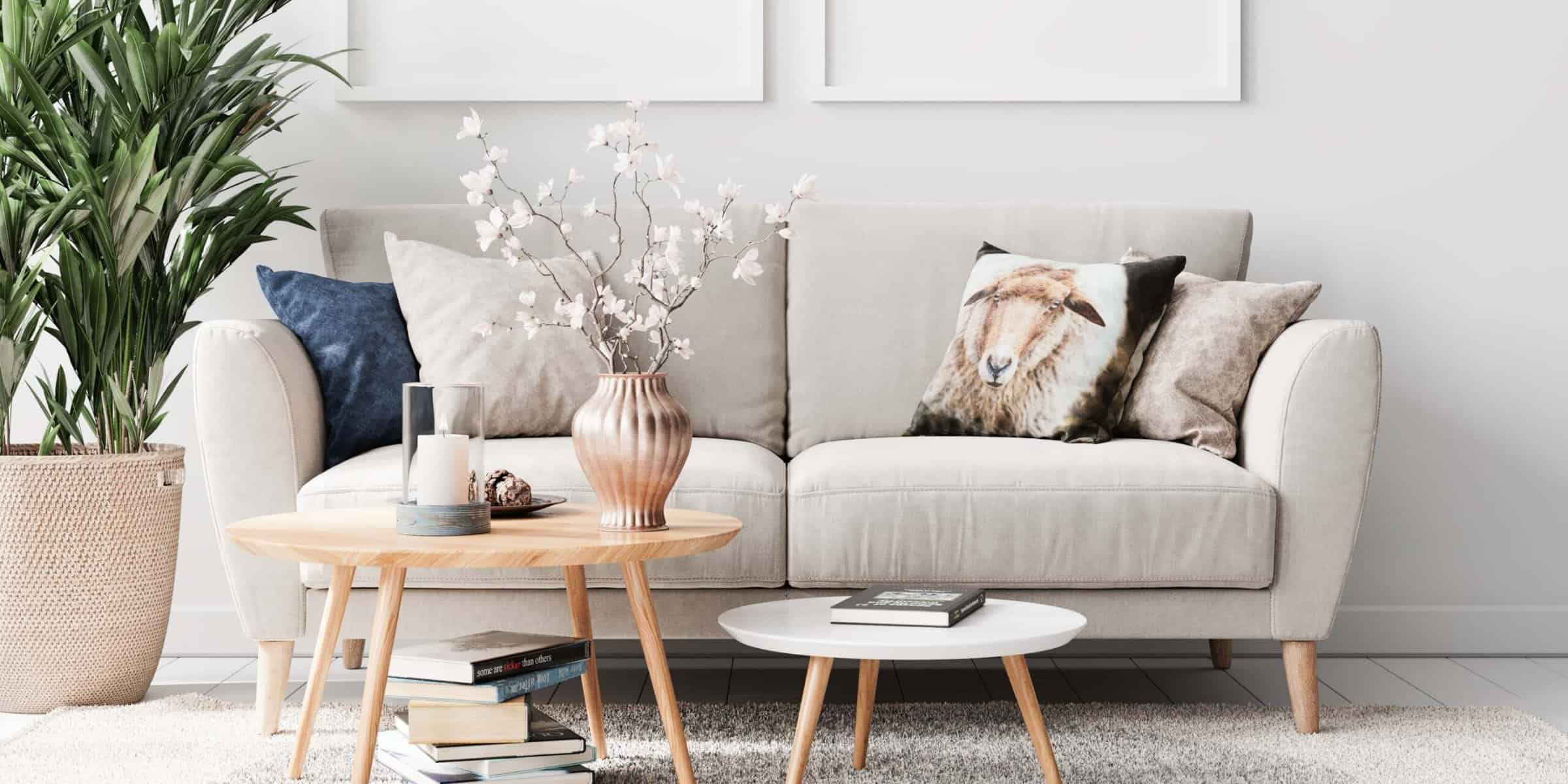
Leave a Reply